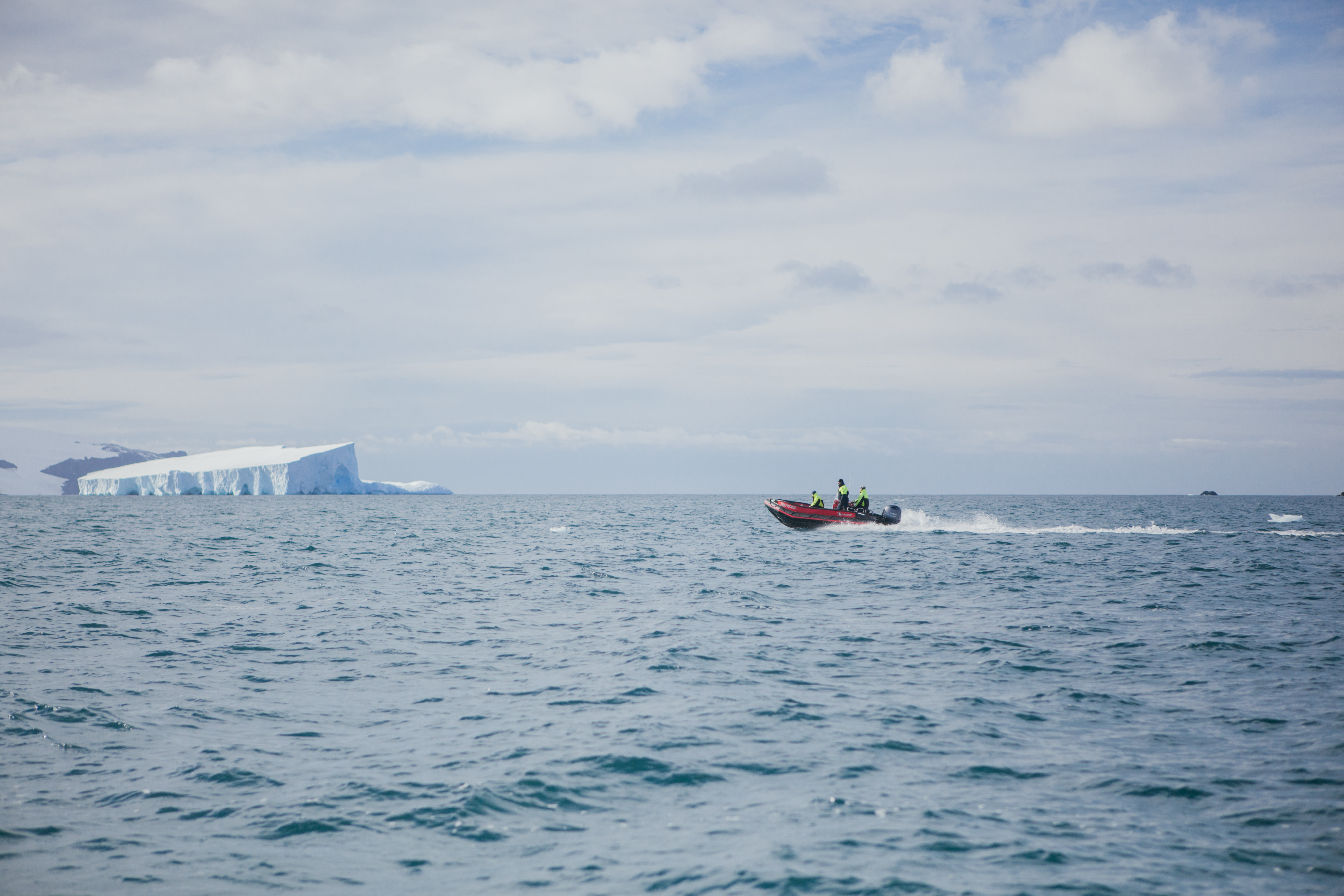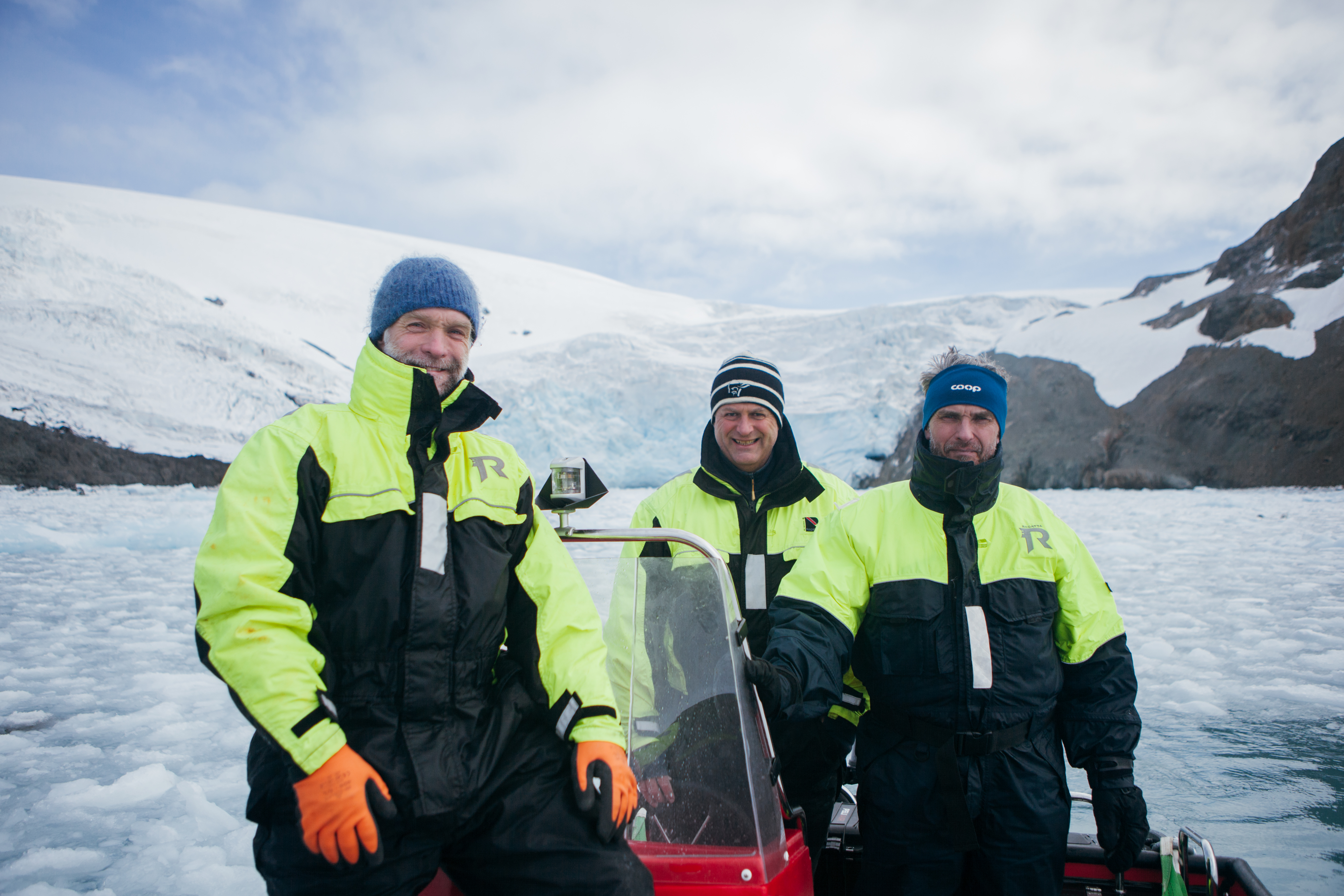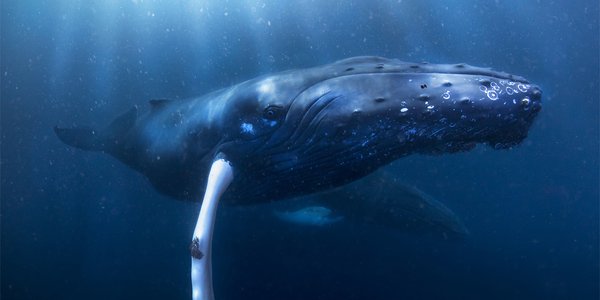Humpback whales make a strong “comeback” in the Antarctic – after decades of protection

IMR scientist Bjørn Krafft shoots a satelitte tag to a humpback whale.
Photo: Oda Linnea Brekke Iden/ IMRPublished: 30.08.2021 Updated: 11.10.2021
Hunting humpback whales in the Southern Ocean has been banned for almost sixty years, and finally the population is recovering.
“Large herds of whales are now visiting their summer grazing grounds here”, explains Bjørn Krafft, a research scientist at the Institute of Marine Research (IMR).
In a new scientific article, researchers from the IMR and British Antarctic Survey (BAS) estimate that over 24,500 humpback whales now visit the waters around South Georgia and the South Sandwich Islands in summer.
“It’s great news! The whale population in the South Atlantic is growing strongly, and the whales are recovering their traditional summer grazing grounds around these islands.”
Almost wiped out by hunting
The Southern Ocean, between South America and Antarctica, was a very popular feeding area for whales in summer.
Here they would stuff themselves with krill and take life easy.
But then whale hunting began.
From the early 20th century through to the 1950s, over 27,000 humpback whales were killed by hunters in this area. The same whales were also hunted at their winter grazing grounds off Brazil.
Eventually, the population was almost wiped out.

Strong comeback after sixty years of protection
When whale hunting finally ended in the Southern Ocean in the 1960s, there were not many humpback whales left. The same was true of other baleen whales.
It would take several decades for their populations to recover. In recent years, however, things have started looking up.
The researchers estimate that the total population of baleen whales in the area is now 43,000, made of various species – including humpback whales.
Baleen whales are one of the two main groups of whales, and include species such as humpback, minke, fin and blue whales – and they are the world’s largest mammals.
Plan to study other parts of the Southern Ocean
The article that has just been published is based on data from the IMR expedition to the Antarctic in 2019.
The scientists Martin Biuw and Ulf Lindstrøm sat on the bridge of the Kronprins Haakon counting whales manually, while researchers from the BAS did the same on another ship.
The scientists also went out in the ship’s boat to tag whales.
“We will continue to study our data, and look at how many whales there are and how they are distributed across other parts of the Southern Ocean”, says Krafft.
Over the past 25 years, he has regularly participated in expeditions and field work in the Antarctic.
“It is really good to see how many animals are thriving in the Southern Ocean now”, he says. “From the smallest krill, to the biggest whales. It shows that conservation activities over recent decades have worked.”

Reference
Mick Baines, Natalie Kelly, Maren Reichelt, Claire Lacey, Simon Pinder, Sophie Fielding, Eugene Murphy, Phil Trathan, Martin Biuw, Ulf Lindstrøm, Bjørn A. Krafft, Jennifer A. Jackson. «Population abundance of recovering humpback whales (Megaptera novaeangliae) and other baleen whales in the Scotia Arc, South Atlantic.». Marine Ecology Progress Series. Inter-Research Science Publisher (2021). LENKE: https://doi.org/10.3354/meps13849

